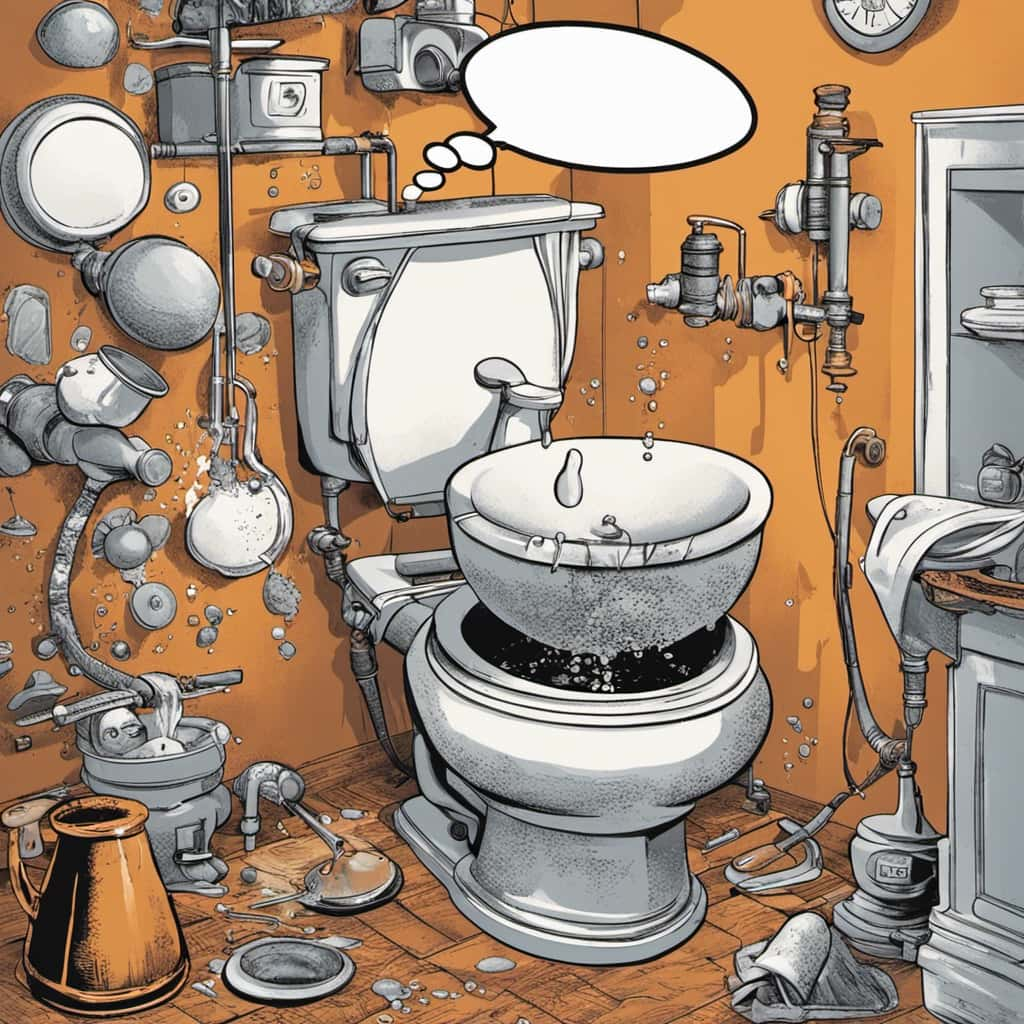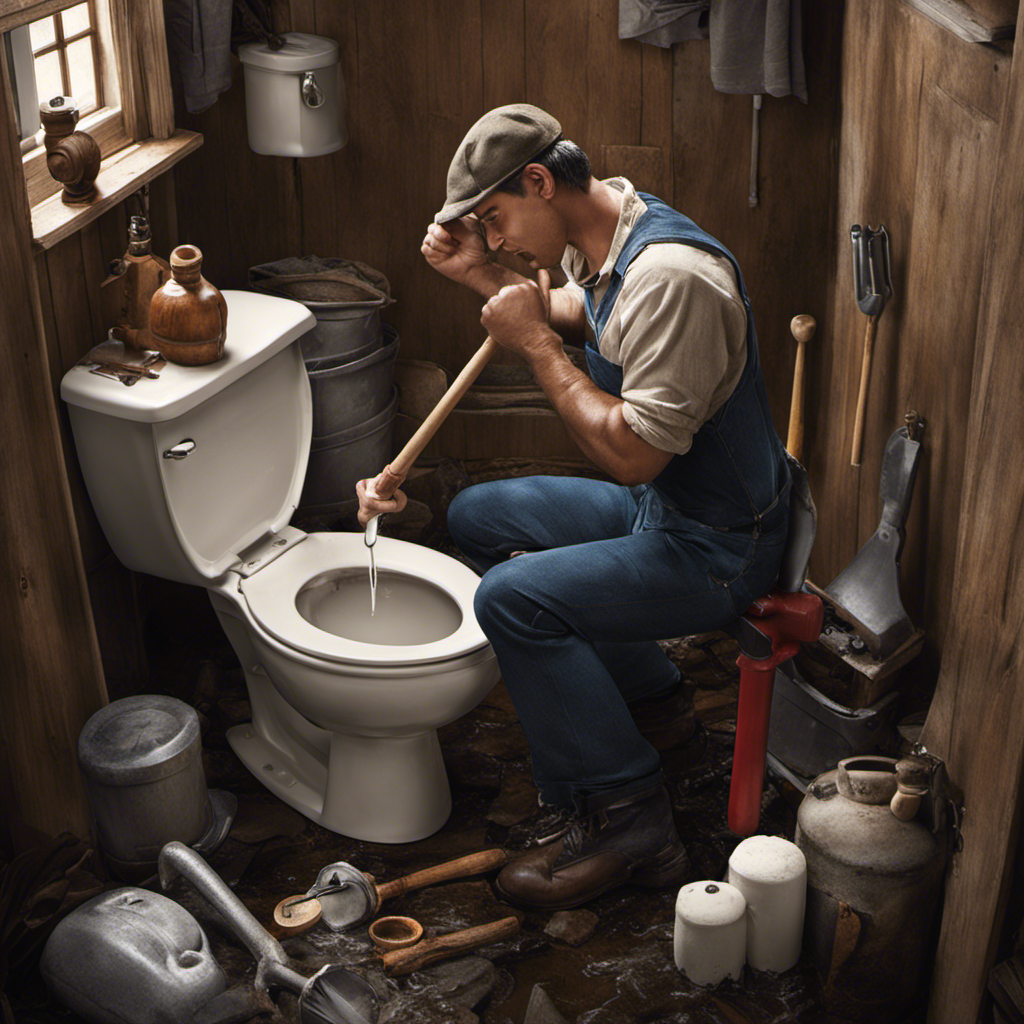Oh, the joys of flushing the toilet! We’ve all been there, standing by the porcelain throne, holding on to the handle for dear life. It’s a strange dance we do, isn’t it?
But fear not, fellow masters of the loo, for we have the answers you seek. In this informative article, we’ll delve into the common causes that force us to hold the handle, and provide you with the steps to fix this flushing dilemma.
Get ready to conquer the commode!
Key Takeaways
- Common causes for having to hold the toilet handle include a faulty flush valve, wear and tear over time, mineral deposits, and a misaligned or damaged flapper.
- A faulty flapper valve can cause constant water running in the toilet bowl, weak or incomplete flush, water leaking into the toilet bowl, excessive water usage, or high water bills.
- Insufficient water pressure can result in ineffective flushing and waste remaining in the bowl. Checking the water supply valve and installing a pressure-boosting system can help improve flushing performance.
- Low water level in the tank can cause repeated flushing. Checking the fill valve, ensuring sufficient water entering the tank, removing clogs or debris blocking water flow, and addressing faulty valve mechanism through regular toilet maintenance can help resolve this issue.
Common Causes for Having to Hold the Toilet Handle
The most common cause for having to hold the toilet handle is a faulty flush valve. When the flush valve isn’t working properly, it can result in a weak or incomplete flush, requiring the user to hold down the handle to ensure that all the waste is properly flushed away.
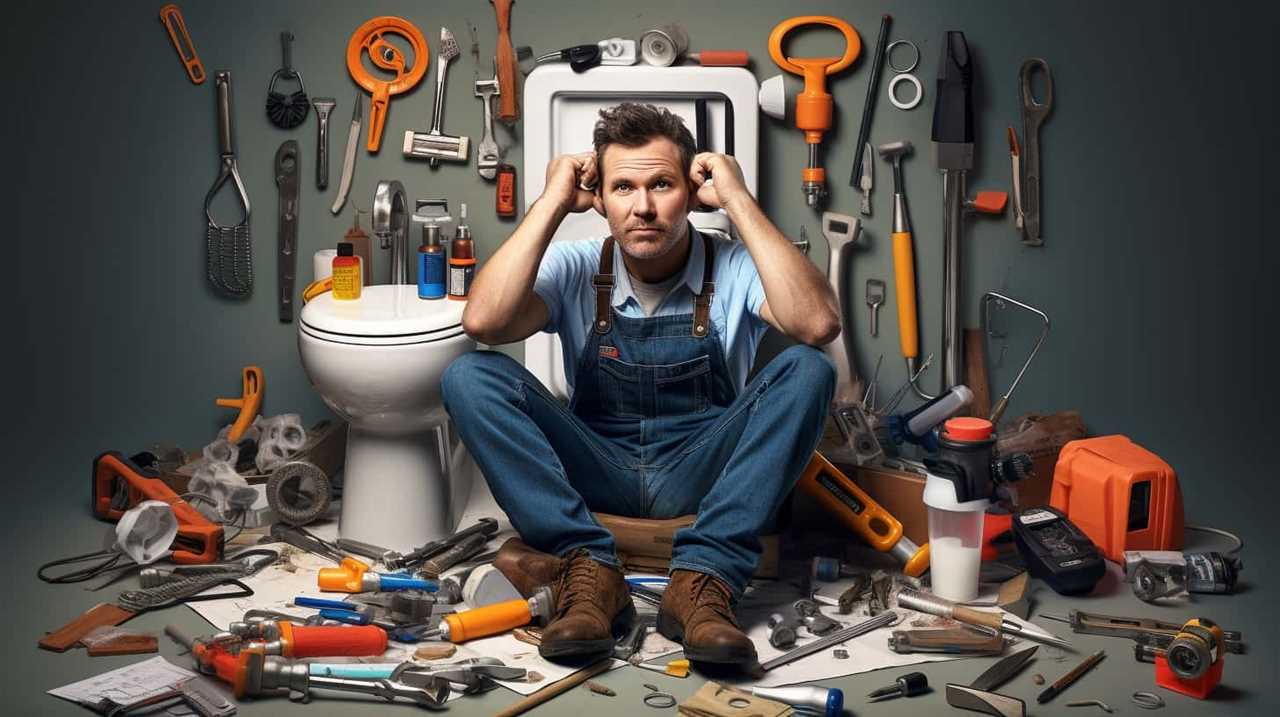
A faulty flush valve can be caused by several factors, including wear and tear over time, mineral deposits, or a misaligned or damaged flapper. To troubleshoot this issue, you can start by checking if the flush valve is clean and free from any debris or mineral buildup.
If cleaning doesn’t solve the problem, it may be necessary to replace the flush valve or the flapper. Proper toilet handle replacement and regular maintenance can help prevent this issue from occurring in the future.
Faulty Flapper Valve: a Possible Culprit
We frequently encounter a faulty flapper valve as a possible culprit for the need to hold down the toilet handle when flushing. The flapper valve is a crucial component of the toilet mechanism that controls the release of water from the tank into the bowl. When the flapper valve is faulty, it can prevent a proper seal from forming, causing water to continuously leak into the bowl. This leak can result in a weak flush, leading to the need to hold down the toilet handle for a longer period to ensure a complete flush. To address this issue, regular toilet maintenance is essential, including inspecting and replacing the flapper valve if necessary. By replacing the faulty flapper valve, you can restore proper functionality and eliminate the need to hold down the toilet handle.
| Common Signs of a Faulty Flapper Valve | Solutions |
|---|---|
| Constant water running in the toilet bowl | Replace the flapper valve |
| Weak flush or incomplete flush | Inspect and replace the flapper valve if necessary |
| Water leaking into the toilet bowl | Check the flapper valve for damage or wear and replace if needed |
| Excessive water usage or high water bills | Replace the flapper valve to prevent water wastage |
Insufficient Water Pressure: a Potential Problem
Our experience has shown that insufficient water pressure can be a potential problem when flushing the toilet. Insufficient water pressure can lead to ineffective flushing, causing waste to remain in the bowl and requiring multiple flushes. This not only wastes water but also affects the overall efficiency of the plumbing system.
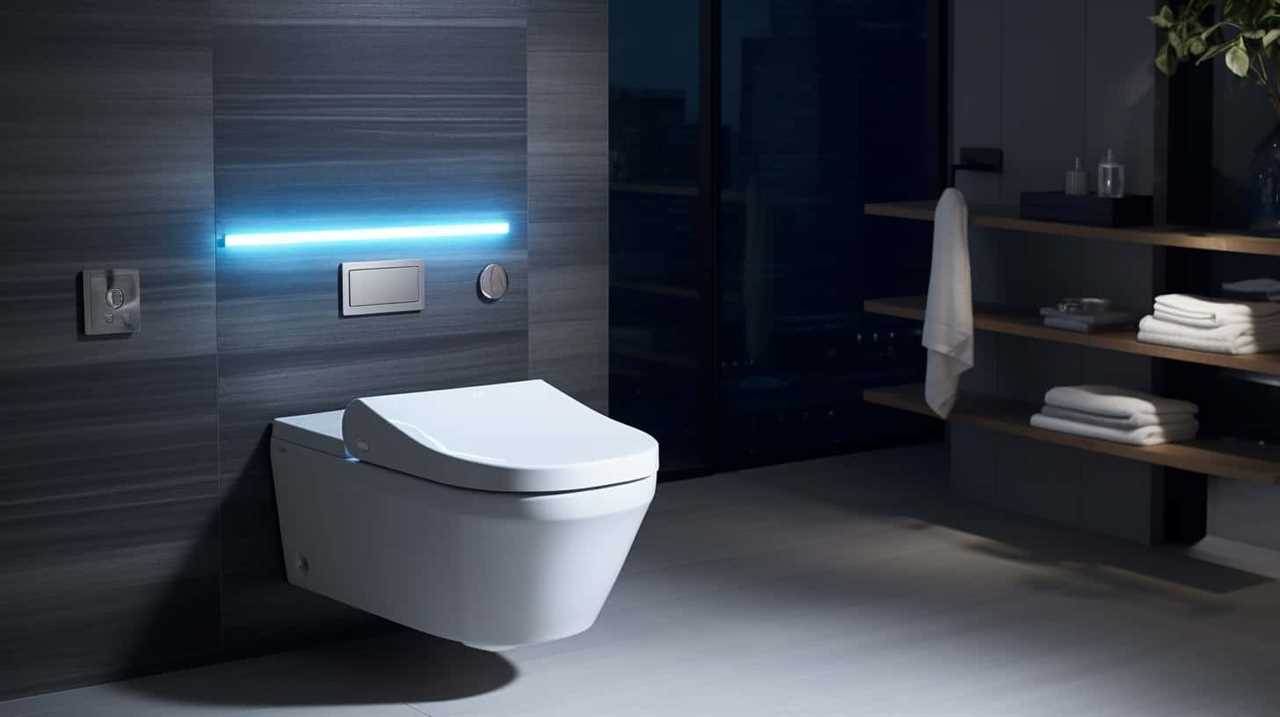
To address this issue, there are potential solutions for increasing water pressure in the toilet. One option is to check the water supply valve and ensure it’s fully open. Another solution is to install a pressure-boosting system, such as a pressure-assisted toilet or a water pressure booster pump. These solutions can help increase water pressure and improve the flushing performance of the toilet.
In the next section, we’ll discuss another potential issue that could be causing the need for repeated flushing: low water level in the tank.
Low Water Level in the Tank: Causing Repeated Flushing
To address the issue of low water level in the tank causing repeated flushing, we should check the fill valve and ensure it’s functioning properly. The fill valve is responsible for refilling the tank with water after each flush. If it isn’t working correctly, it may not allow enough water to enter the tank, leading to a low water level. This can result in inefficient flushing and increased water usage.
One possible cause of a malfunctioning fill valve is a clog or debris blocking the water flow. Another potential issue is a faulty valve mechanism that needs to be replaced. Regular toilet maintenance is crucial to prevent such problems and ensure optimal flushing efficiency.
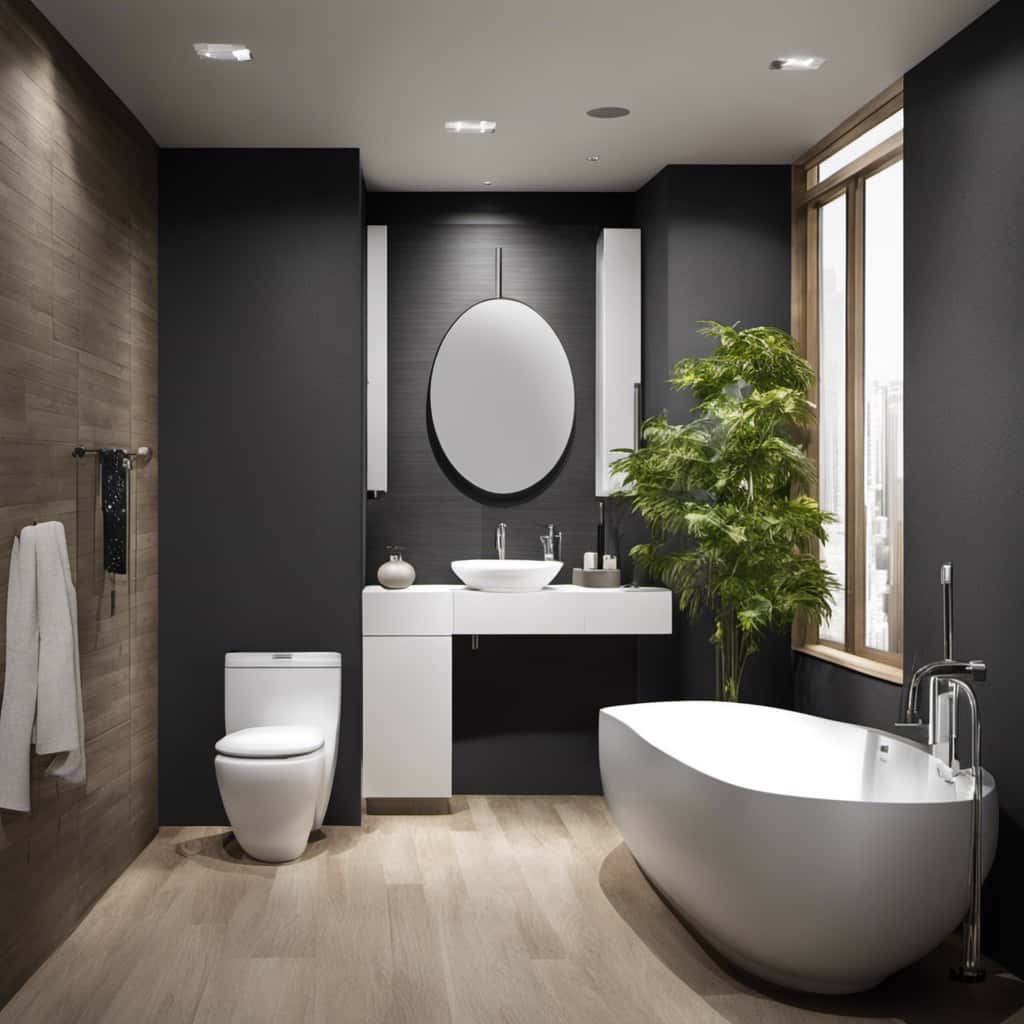
Now let’s move on to the steps to fix the issue and improve flushing efficiency.
Steps to Fix the Issue and Improve Flushing Efficiency
To improve flushing efficiency and fix the issue of having to hold the handle when flushing the toilet, we can start by adjusting the water level in the tank. A low water level can result in weak flushes and the need to hold the handle for a longer duration.
To adjust the water level, locate the water level adjustment screw or valve on the fill valve assembly. Turning the screw or adjusting the valve can increase or decrease the water level in the tank.
Additionally, consider upgrading the flushing mechanism. Older toilets may benefit from replacing the flapper valve or the entire flush valve assembly. Another option is to replace the toilet handle itself, as a worn or faulty handle can also contribute to flushing issues.

Frequently Asked Questions
Can a Faulty Flapper Valve Cause Other Issues With the Toilet?
Yes, a faulty flapper valve can cause other issues with the toilet. It can result in inconsistent flushing, water leaks, and wasted water. Regular flapper valve maintenance and troubleshooting are necessary to ensure proper toilet flushing.
How Can I Determine if I Have Low Water Pressure in My Home?
To check for low water pressure in our home, we can attach a pressure gauge to a faucet. If the reading is below 40 psi, we may need to increase water pressure by adjusting the pressure regulator valve.
Is It Possible for the Water Level in the Tank to Affect the Flushing Power of the Toilet?
Yes, the water level in the tank can affect the flushing power of the toilet. If it’s too low, it may not provide enough force to clear the bowl properly. This is a common issue in toilet troubleshooting and can be resolved with proper toilet maintenance.
Are There Any Other Potential Causes for Having to Hold the Toilet Handle While Flushing?
Potential causes for having to hold the toilet handle while flushing may include a faulty flapper valve, a loose chain, or a problem with the water pressure. These issues can be fixed by adjusting or replacing the affected components.
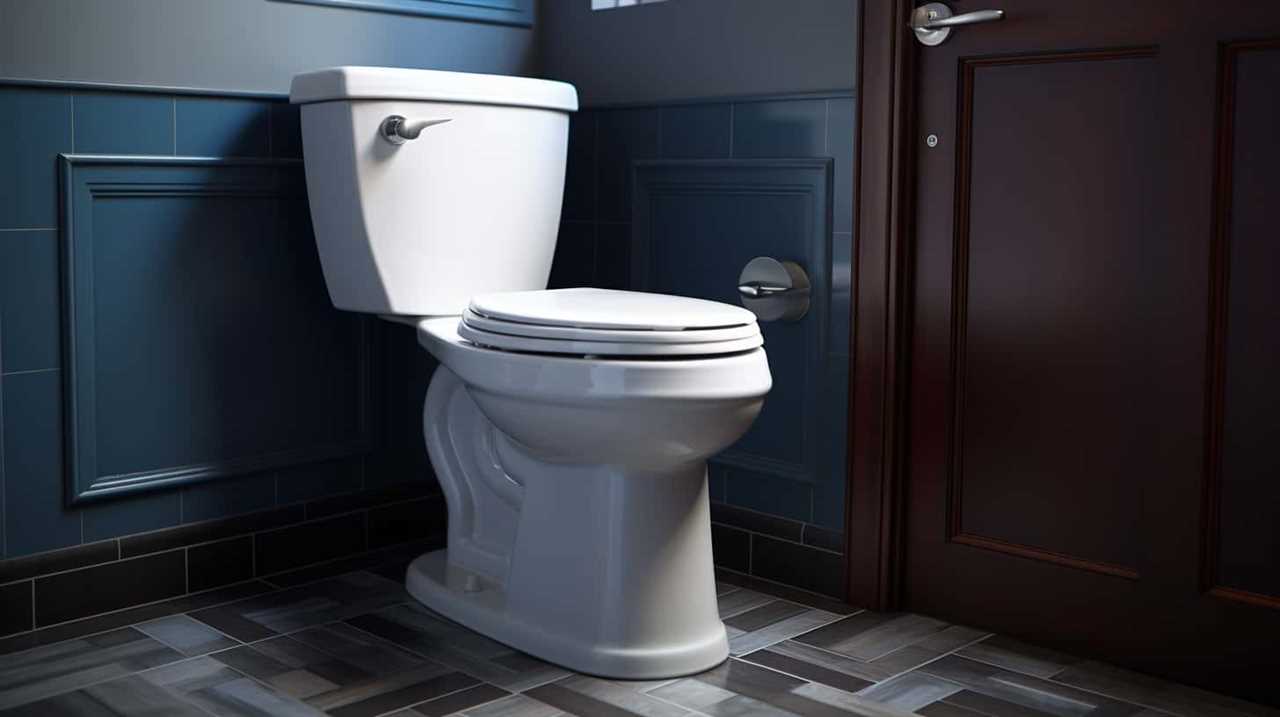
What Steps Can I Take to Prevent This Issue From Happening in the Future?
To prevent this issue, we recommend implementing preventative measures and troubleshooting techniques. These can include adjusting the chain length, cleaning the flush valve, or replacing the handle mechanism.
Conclusion
In conclusion, if you find yourself having to hold the toilet handle after flushing, there are a few common causes to consider.
A faulty flapper valve, insufficient water pressure, or a low water level in the tank could be the culprits.
Fortunately, these issues can be easily fixed to improve flushing efficiency.
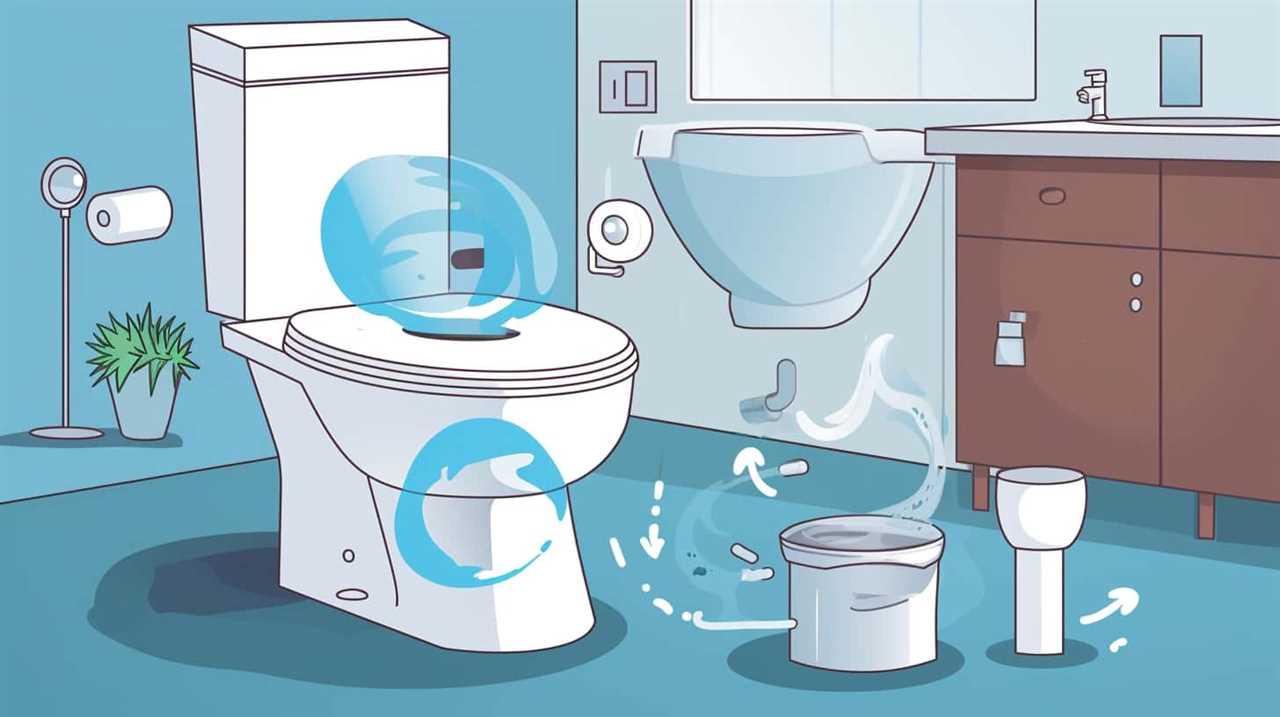
By addressing these problems promptly, you can ensure a smoother and more efficient flushing experience.

